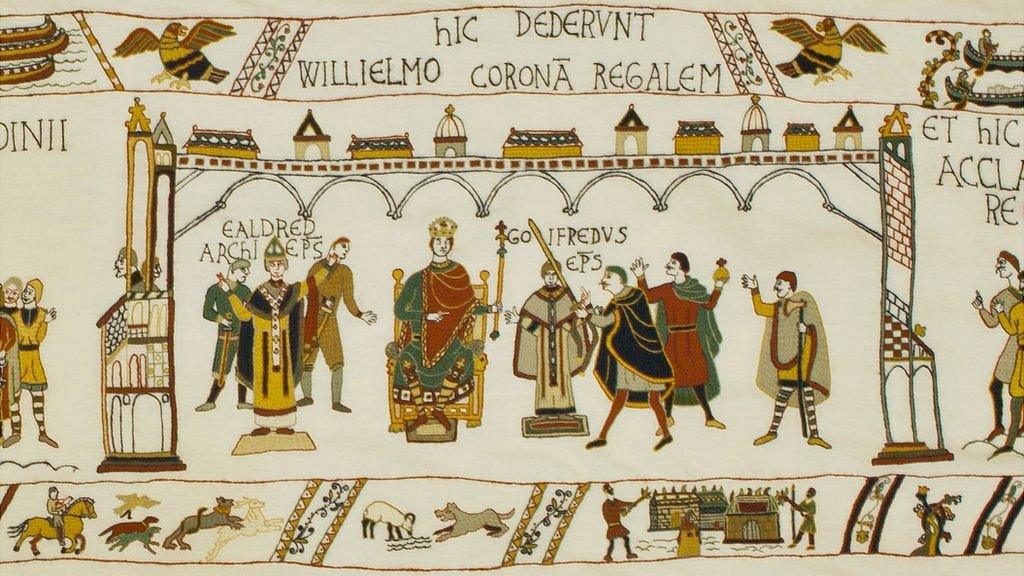Wisbech embroiderer recreating the Bayeux Tapestry passes half-way point
- Published
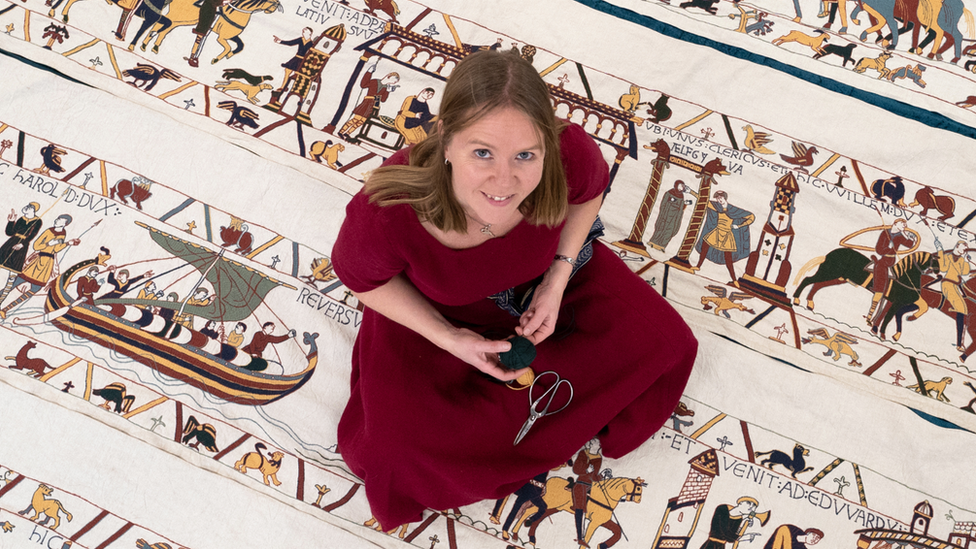
Mia Hansson wants to sew her final stitch on the 11th anniversary of her first one
An embroiderer working on a full-scale replica of the Bayeux Tapestry has passed the half-way point in her epic quest.
Mia Hansson, 48, has finished 38m (124.6ft) of the 68m (223ft) work after threading her first needle in 2016.
She wants to sew the final stitch in the artwork on 13 July 2027 - marking 11 years to the day since it all began.
Ms Hansson says creating the tapestry has been "the perfect project" for "anyone out there who is easily bored".
The original 58-scene Bayeux Tapestry tells the story of the Norman conquest of England in 1066, with William, Duke of Normandy, challenging King Harold II - and culminating in the Battle of Hastings.
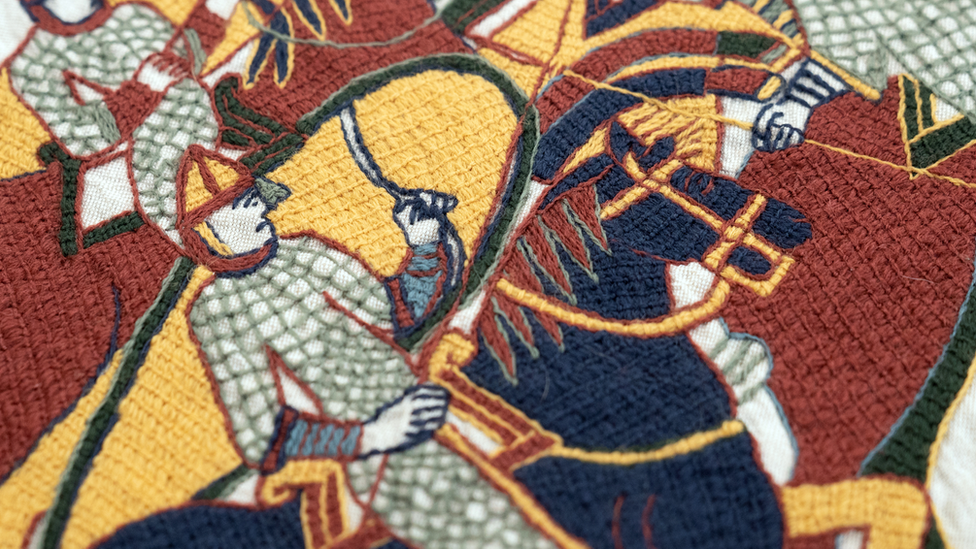
Ms Hansson uses image transfers to draw the outlines, keeping the detail authentic to the original tapestry
It is believed the tapestry was made soon after the events in the 11th Century, and is a masterclass of colour and drama, with fantastical creatures, ships and horses and an ominous appearance by Halley's Comet.
The fragile linen tapestry hangs on public display in the Bayeux Museum, external in Normandy, France.
Swedish-born Ms Hansson, a full-time carer who lives in Wisbech, Cambridgeshire, said she is now working on the last ship of the Norman fleet in the water, with the next stage telling of their entry on to English shores.
"I always tend to think about the image and what's coming next," she says.
"It's quite a while before the battle starts. I really like to get the ships and the horses embroidered because they make such an impact," she says. "They are so laborious, these big chunks of colour, they draw your eyes to it.
"The ships are so big, in some cases half a yard long."
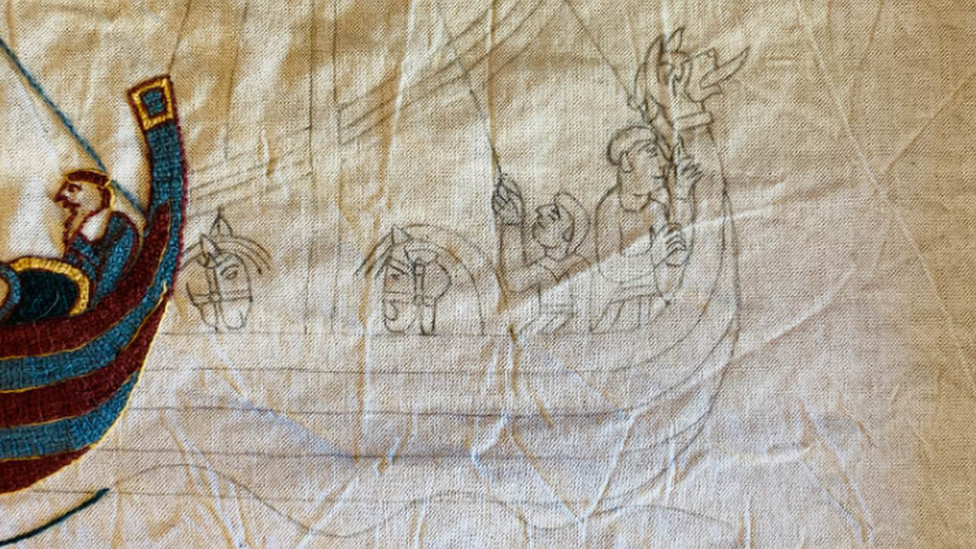
Ms Hansson's work starts with an image transfer she draws on the linen fabric
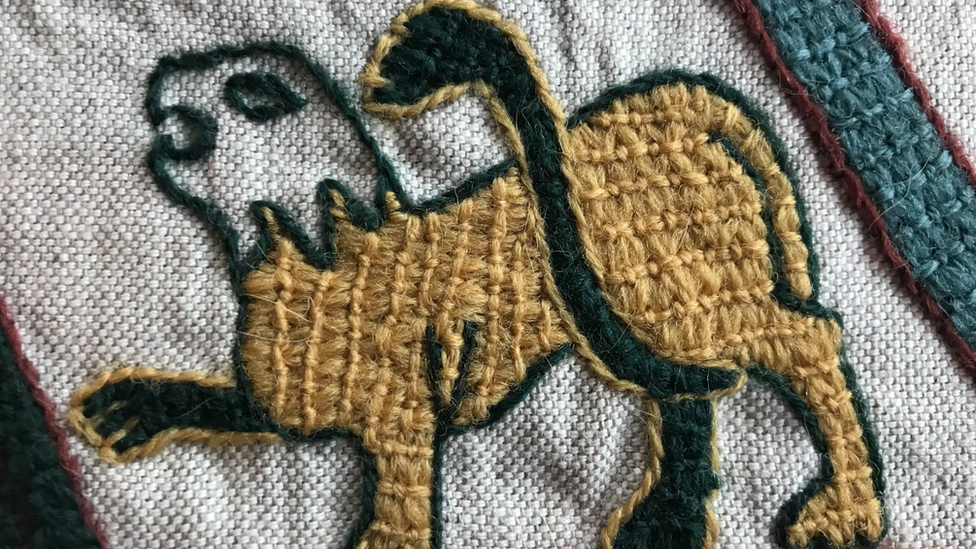
She sources thread to the precise colour of the original tapestry, using Bayeux stitch (laid work) and stem stitch
Ms Hansson has more than 20 years of embroidery experience and has worked as a period seamstress creating Viking re-enactment clothing.
But when the orders stopped coming in she "needed something substantial" to fill in the boredom, she says.
"I'm always pushing myself," Ms Hansson says.
"In January, I was sewing the Harold coronation scene and someone pointed out that it was the actual anniversary of the event, but I'd only just done the outline.
"I pushed myself to finish it because otherwise he would be naked for the anniversary - I worked all night."
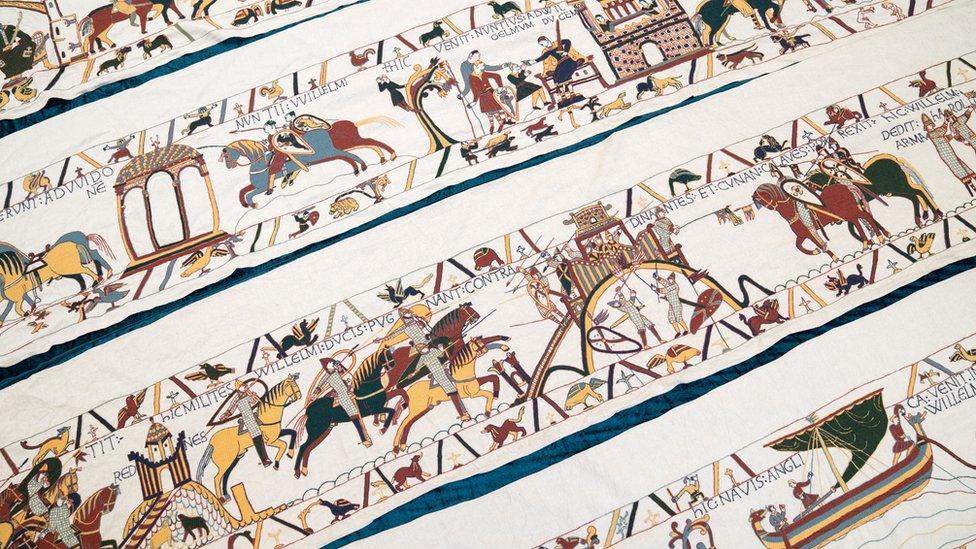
Ms Hansson has exhibited sections of completed work in museums and said she may eventually sell it
Ms Hansson, a former teacher, says it was difficult to go from correcting mistakes in school books to having to replicate the errors in the original tapestry.
"There is evidence [that] the original embroiderers worked across from each other with the fabric stretched, you can see where it met in the middle," she adds.
"There are several chain mails in the France section where the soldiers are given arms. From one end of the fabric someone has been lazy and put square links on the chain mail. They are usually rounded.
"The same person would not have made that mistake - but I have to keep it like that.
"I am making it as authentic as I can, with colours as close to the originals as possible.
"Modern dyes are quite static, the original colours were natural and made from plants, depending on the season and the quality of the wool, for example the blue shades are more faded than the others."
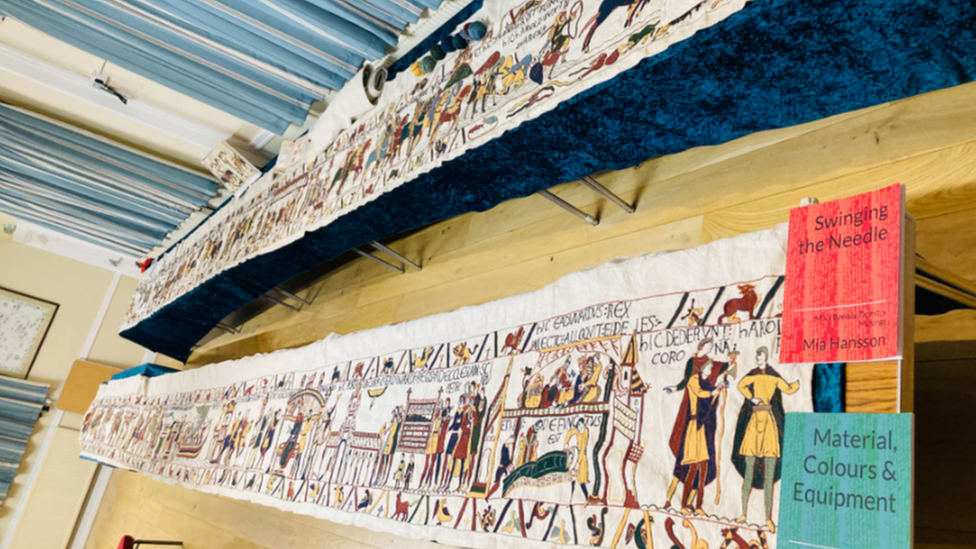
Ms Hansson has exhibited the completed sections at different times
Ms Hansson explains how she uses laid work - known as Bayeux stitch - and stem stitch for outlines, but said the original embroiderers popped in "random chain stitches" in the sails and ropes detail.
"Is that to trip me up, 1,000 years later?" she asks.
She orders specific thread at cost price and works on 9m (29.5ft) lengths of 100% linen at a time, which is heavier than the original weave which "tore and split and broke over a thousand years".
"I don't want to put all this work in just for it to break," she says.

Every face, limb, ship, feature is exactly as it appears on the original work - including the mistakes
She says she has a new-found respect for the original embroiderers, especially keeping the "back side" of the tapestry neat.
While they sewed across a table, Ms Hansson works with it on her lap, without an embroidery frame.
"I have face eyes and finger eyes," she says.
"I have to keep turning the fabric over to make sure it's right and I can do that on the sofa. They couldn't turn it over or crawl under it to check the back," she adds.
Ms Hansson also started writing about her embroidery during lockdown, producing an eight-part series of "musings" on the challenges and details of replicating the Bayeux Tapestry.
"My aim is to recreate it to look as it would have done when it was brand new - like someone has shone a light on it," she says.
"No two images on it are identical, no two horses or dragons, or the stirrups," she says.
"There's so much to see if you open your eyes."

Find BBC News: East of England on Facebook, external, Instagram, external and Twitter, external. If you have a story suggestion email eastofenglandnews@bbc.co.uk, external
Related topics
- Published16 February 2022
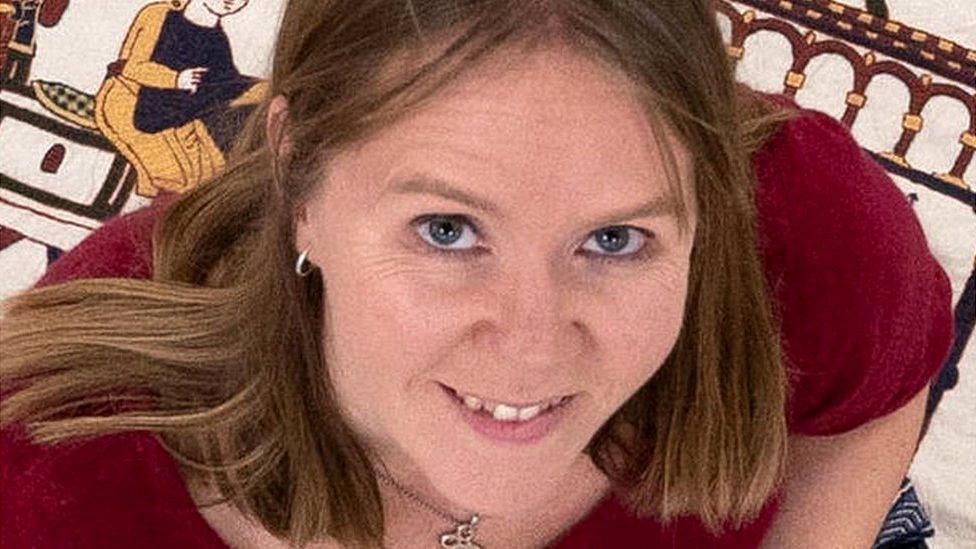
- Published18 January 2018
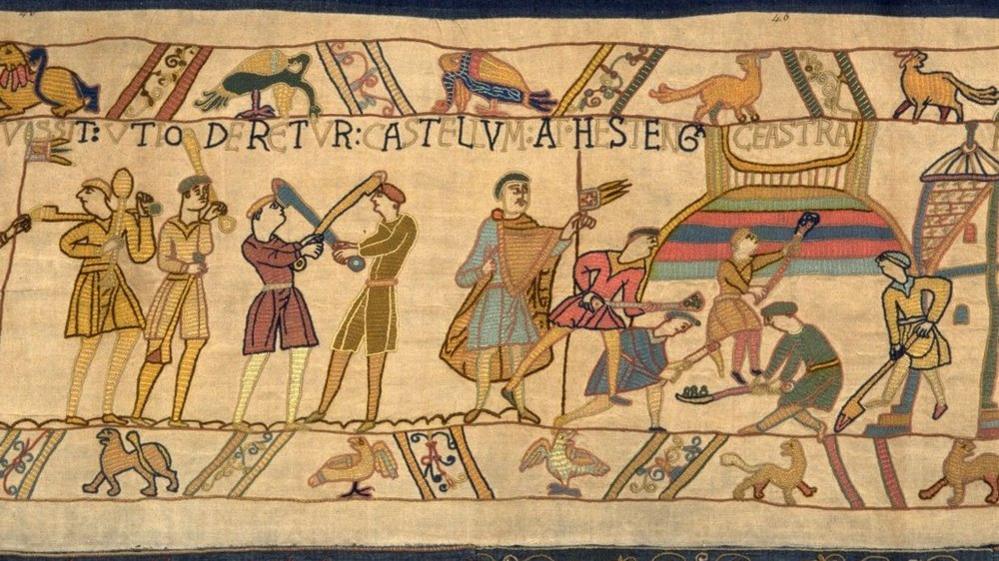
- Published1 July 2014
